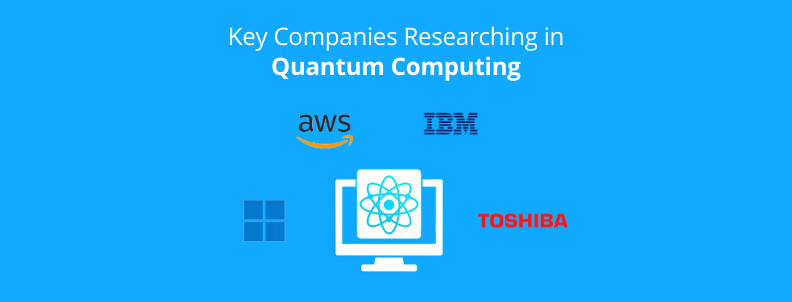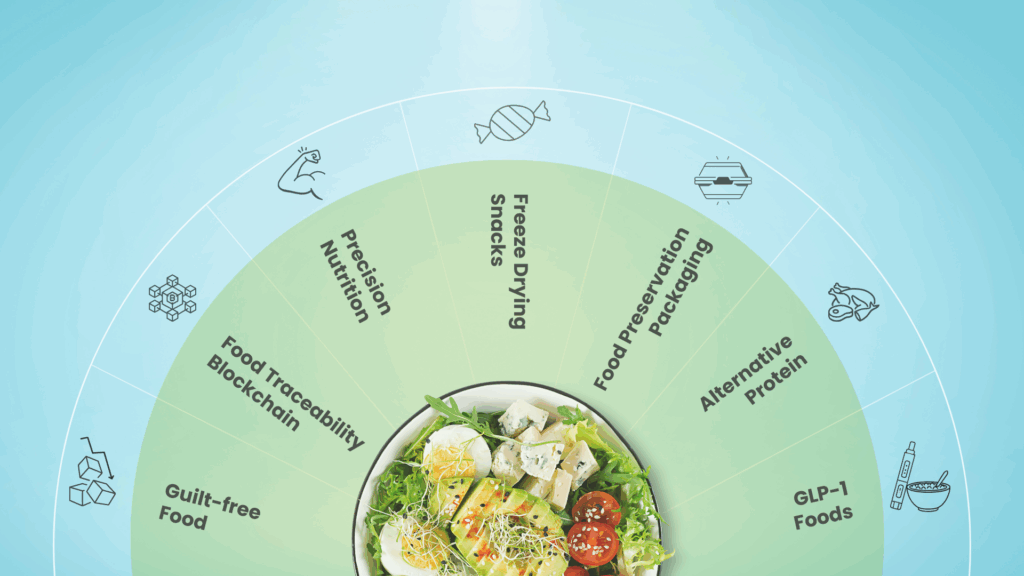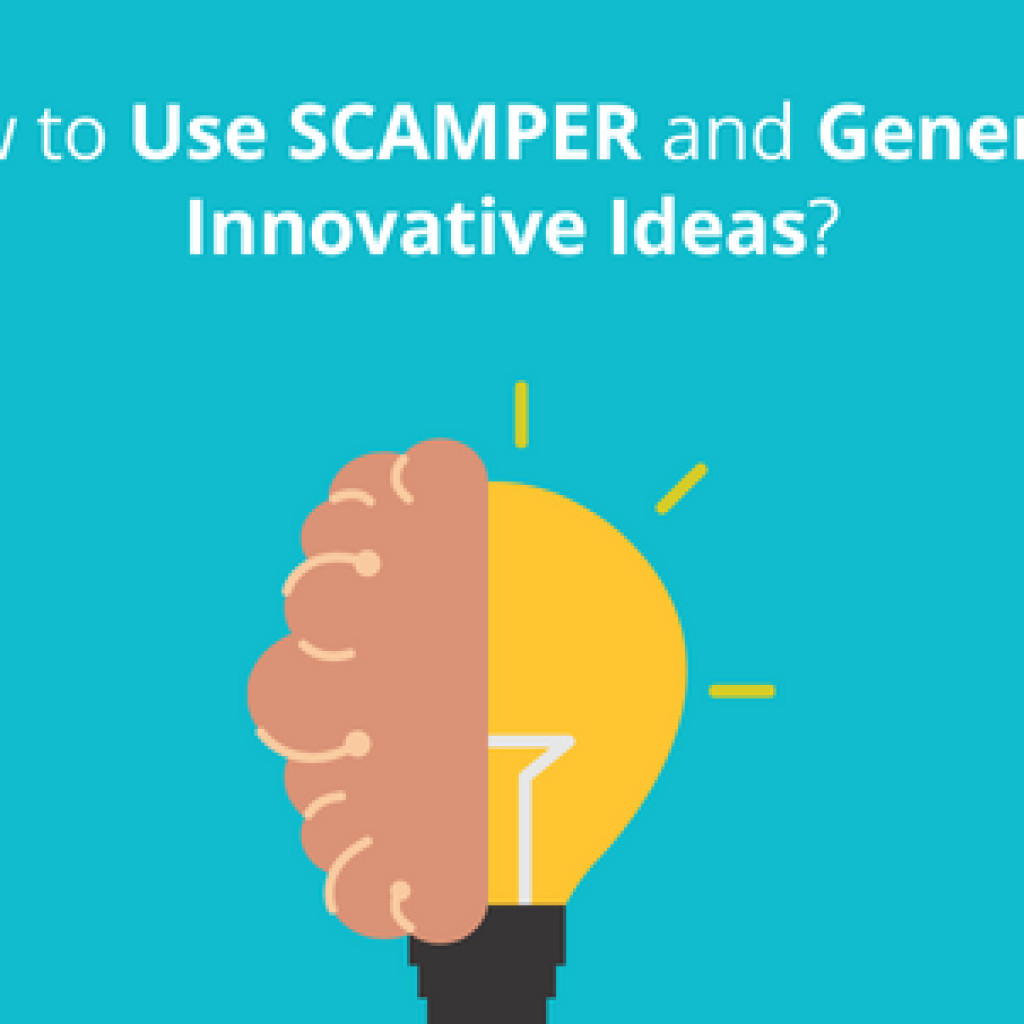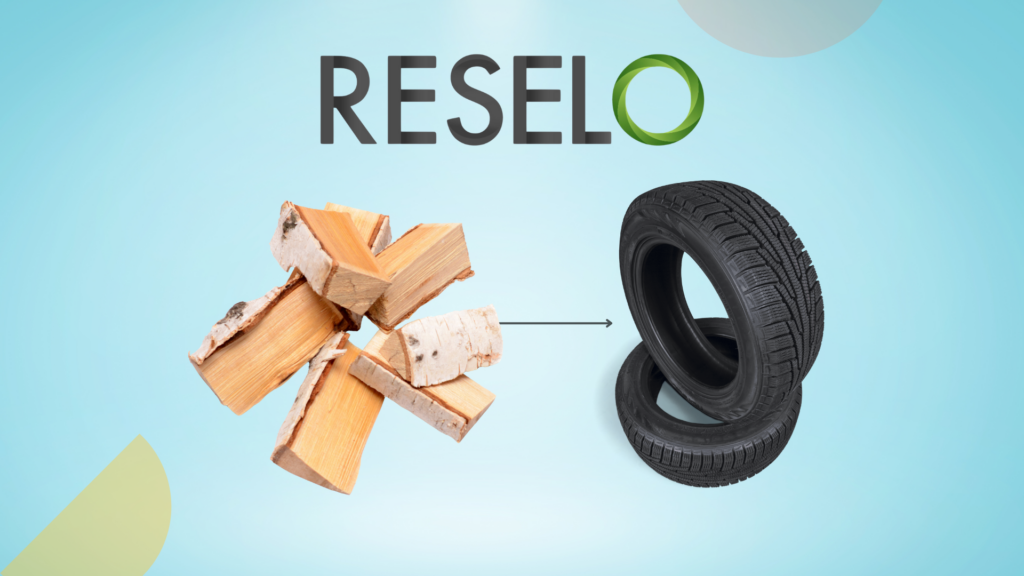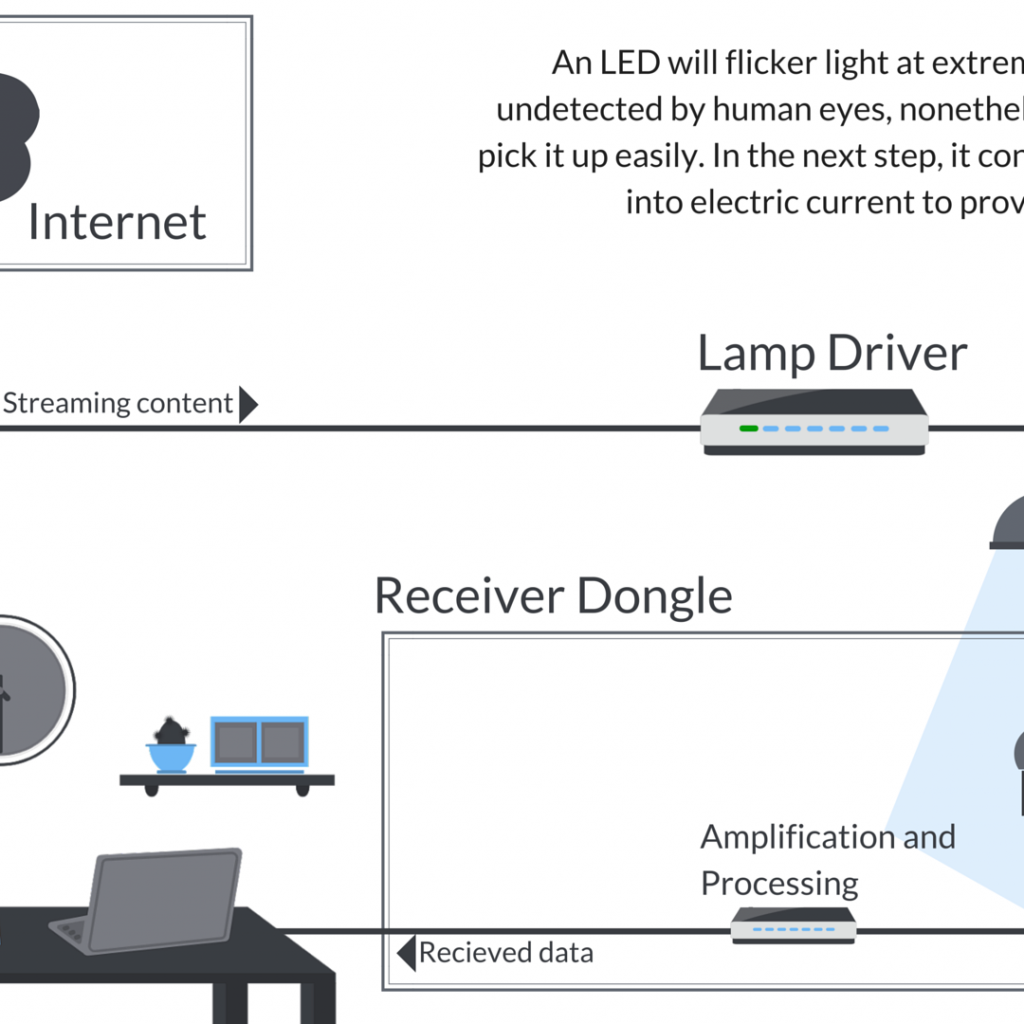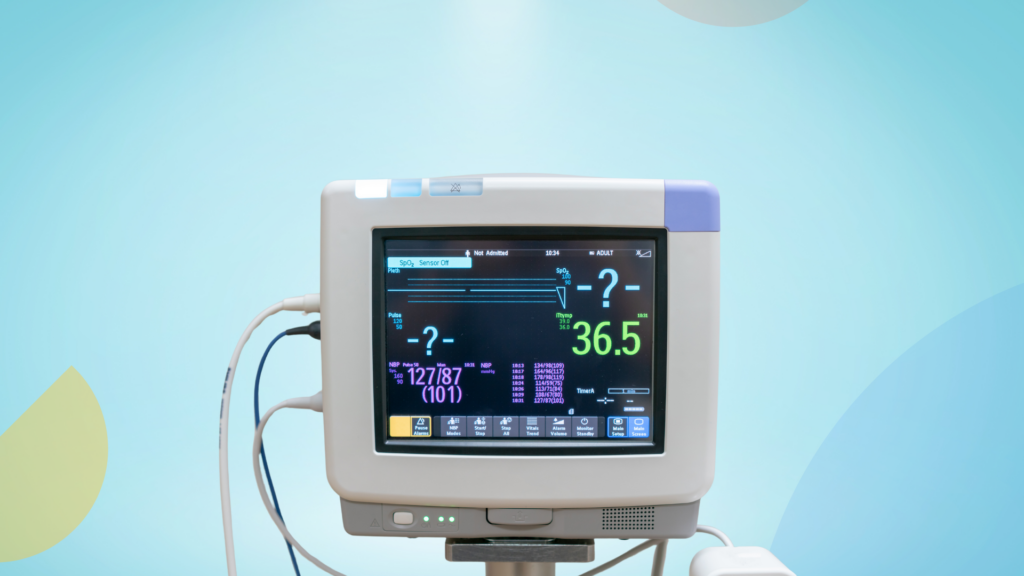In the past two months, we set on a journey to uncover all there is to know about Quantum computing. Starting from the market to industries, exploring how companies from different industries are using quantum computing to their benefit. These companies are either collaborating in joint research or using a quantum computer of companies that are doing core research in the technology.
This is the final part of our journey. In this part, we cover the companies that have been indulged in the core research of making a quantum computer. Below is what our full report covers:
- Research trends of quantum computing
- Leading companies and prominent startups
- Top countries where research is being done
- The impact that quantum computing is having on other industries
Get your hands on a full report using the form below and uncover everything about the Quantum computing market and research.
Despite the research ongoing for a decade, a commercial quantum computer is still years away. Yet researchers of different organizations are making small progress to make their quantum computers more reliable and efficient.
Every day, breakthroughs or revelations of a quantum application make it to the research papers or in patents. Some recent researches that caught our attention are as follows-
1. Research at RIKEN Center for Emergent Matter Science
Recently, A three-qubit entangled state has been realized in a fully controllable array of spin qubits in silicon. Seigo Tarucha and five colleagues, all at the RIKEN Center for Emergent Matter Science, have now initialized and measured a three-qubit array in silicon with high fidelity (the probability that a qubit is in the expected state). They also combined the three entangled qubits in a single device.
Using three entangled qubits they can scale up and implement error correction.
2. AMD’s breakthrough in Quantum teleportation
Another breakthrough comes from AMD as they filed a patent application to teleport qubits to achieve a much more reliable quantum communication.
Quantum teleportation can provide a much faster communication by teleporting the quantum state of a particle rather than the particle itself. And with entanglement, one can measure the quantum state of two entangled particles.
These were just some of the updates, but the research has been going on for quite some time and with each day, the progress keeps growing.
The analysis of quantum computing patents further revealed the companies filing applications to secure their inventions. The below chart gives you the top company that filed patents in quantum computing technology.
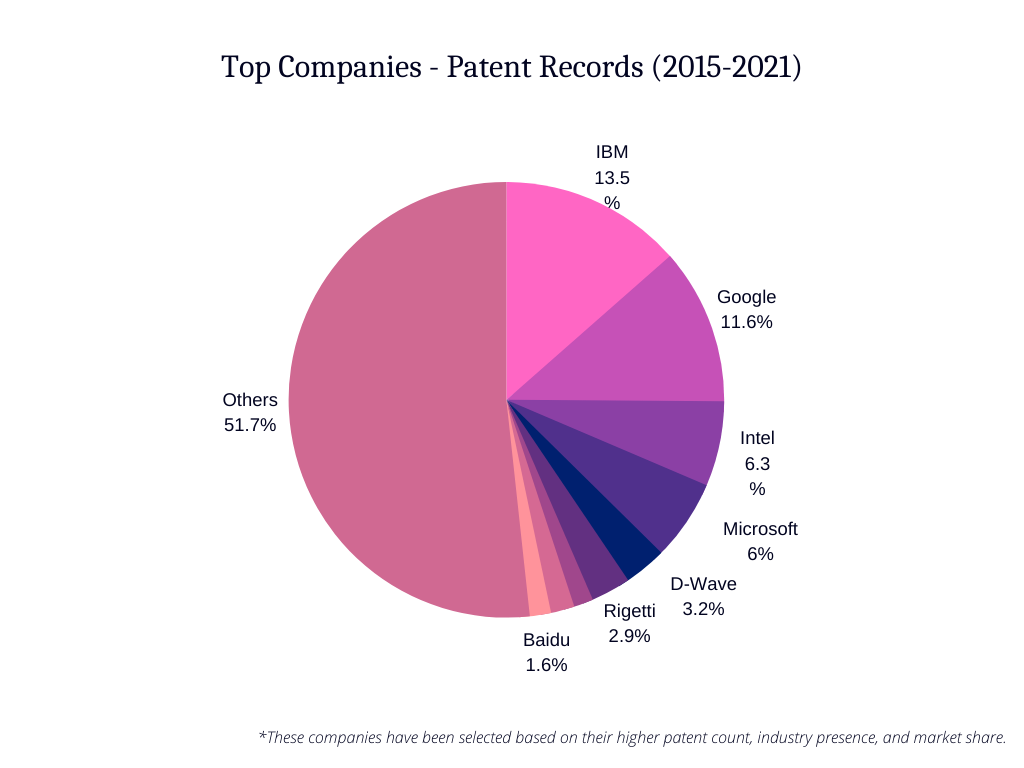
Patents are one of the criteria to find the top companies doing the innovation but to find the full picture, we did market research and competitive analysis and found the best players in quantum computing.
As per patent and market research analysis, the top 10 quantum computing companies are:
IBM
IBM Quantum is a first-of-its-kind industrial initiative to create universal quantum computers for business, engineering, and science. This initiative encompasses improving the complete quantum computing technology stack as well as investigating applications to make quantum more widely usable and accessible.
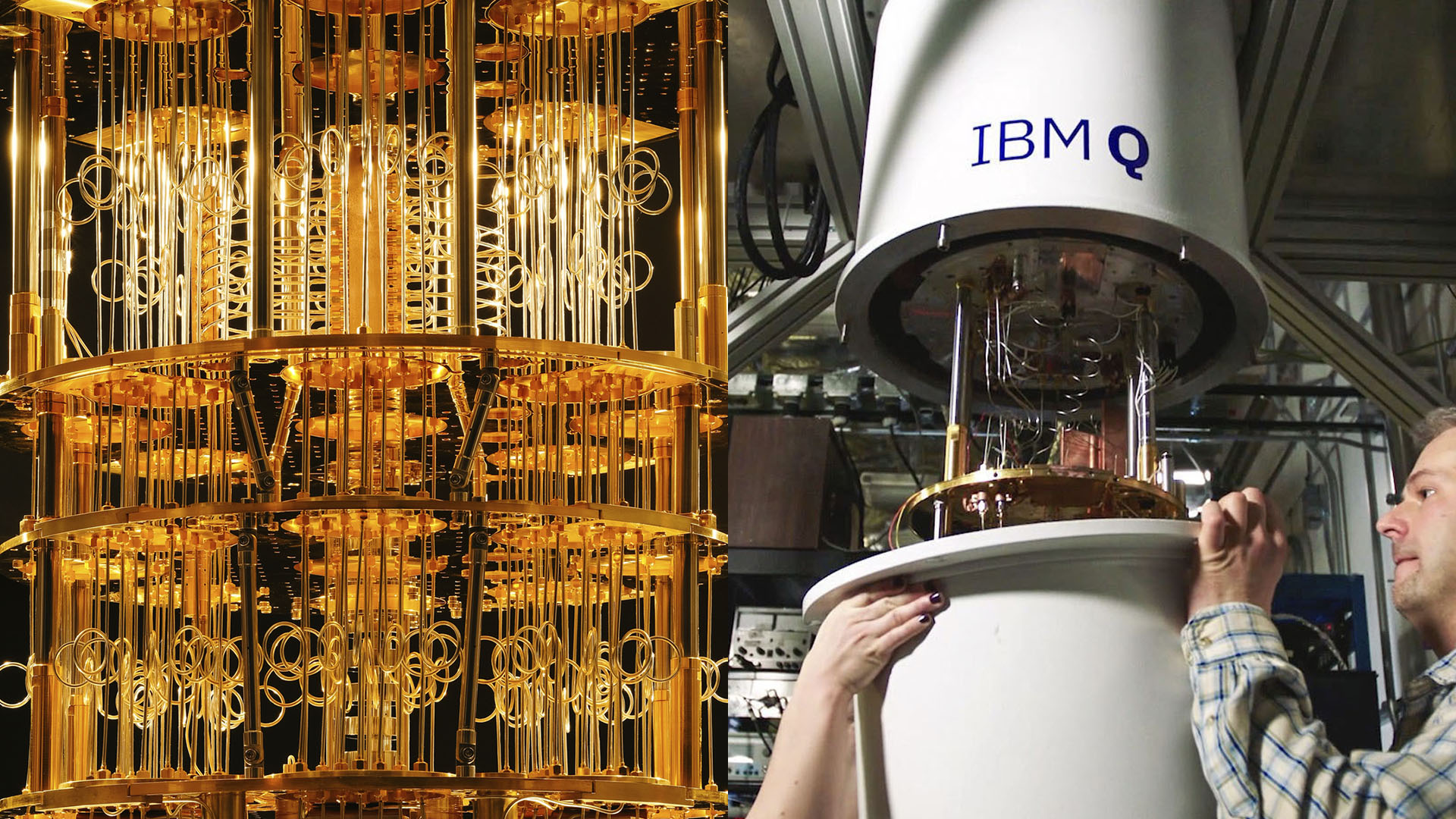
IBM is devoted to generating innovation for customers in the IBM Quantum Network and the wider IBM Quantum Community through a global network of Fortune 500 businesses, Academic Institutions, Researchers, Educators, and Enthusiasts.
Products and Technologies
IBM Quantum Services – IBM Quantum Services provides secure, portable, containerized runtime and programming tools for accessing the most cutting-edge cloud-based quantum systems and simulators via the IBM Cloud. Using pre-built application models available through the cloud, users may continue to advance their work across the full quantum computing stack.
Full Stack Quantum Software – IBM Qiskit, an open-source quantum programming platform, makes it simple to access quantum simulators and quantum devices through the cloud. Qiskit makes quantum programming accessible to academics, educators, developers, and enthusiasts.
Qiskit may be used to identify mistakes, autocomplete code, and produce visualizations of complicated quantum states. Using conventional programming languages and industry-standard development tools, seamlessly incorporate quantum development into regular processes.
IBM Quantum System One – Developed at the intersection of Quantum Physics, Cryogenic Engineering, Systems Engineering, and industrial design, it is the pinnacle of the IBM Quantum offering. The world’s first Integrated Quantum Computer System built for select clientele who want an on-site system for their exclusive usage.
IBM Quantum System One has a 27-qubit Falcon generation quantum processor with a quantum volume of 32. The system may be upgraded to our 65 qubit Hummingbird processors and our 127 qubit Eagle processors when they become available in late 2023.
Over 20 systems are presently accessible through various degrees of service customized to the company’s specific customer needs. Several IBM systems are publicly accessible to the public via IBM’s Open Access program.
IBM Q System One was announced at the 2019 Consumer Electronics Show (CES). IBM Q systems are intended to one day solve issues that are now regarded as too complicated and exponential for traditional systems to manage. In addition, IBM announced plans to build the first IBM Q Quantum Computation Center for commercial clients in Poughkeepsie, New York, in 2019.
IBM Quantum systems – IBM Quantum systems are currently dominating the world in terms of quantum computing resource performance, accessibility, and availability. IBM Quantum publicly disclosed detailed plans in October 2020 to achieve 1000+ qubits by the end of 2023, as well as how IBM intends to grow beyond this in the years ahead.
Condor Quantum Computer – IBM quantum scientists are developing the Condor quantum computer, which will house a 1,121-qubit CPU within a huge dilute “super-fridge.” By 2023, the Condor processor-based quantum computer will be operational and capable of investigating Quantum Advantage. Internally nicknamed “Goldeneye,” the 10-foot-tall and 6-foot-wide super-fridge are a dilution refrigerator larger than any commercially available today.
Eagle Processor – In 2022, IBM’s Eagle Processor will be followed by the 433-qubit “Osprey” processor. Osprey continues to push the frontiers of manufacturing processes to produce a smaller device with more logical qubits while maintaining performance. Its more efficient and dense controllers, as well as cryogenic infrastructure, will ensure that scaling up future processors does not compromise individual qubit performance, introduce additional sources of noise, or take up an excessively large footprint.
IBM will unveil the 127-qubit “Eagle” processor in 2021. Eagle has numerous improvements to decrease qubit faults, including a unique architecture that will allow for increasing the number of qubits that function together as logical qubits – the “fault-tolerant” qubits required to achieve Quantum Advantage. The company will also provide concurrent real-time conventional computation capabilities with the Eagle processor, allowing for the execution of a larger family of quantum circuits and codes.
On August 20, 2020, IBM announced a new milestone on its quantum computing road map, attaining the company’s largest Quantum Volume to date. IBM has updated one of its newest 27-qubit client-deployed systems to a Quantum Volume 64 by combining a combination of innovative software and hardware approaches. Over the previous four years, the corporation has made 28 quantum computers available through IBM Quantum Experience.
Collaborations
IIT Madras & IBM Collaborate to offer Quantum Computing Courses
The Indian Institute of Technology (IIT) Madras collaborated with IBM on quantum computing education and research in May 2021. IIT Madras faculty, researchers, and students would get access to IBM’s quantum systems and tools via the IBM Cloud as part of the cooperation. IIT Madras’ Quantum Computing Lab would conduct undergraduate and postgraduate courses. The course would encourage collaborative research in quantum computing and design curriculum to assist students for careers in science and industry that will be affected by the next era of computing. The courses will be taught collaboratively by IIT Madras academics and IBM researchers.
IBM partners with the U.K. government on $300 million quantum computing research initiative
The United Kingdom government and IBM announced a five-year £210 million AI and quantum computing collaboration in June 2021, with the goal of making discoveries and developing sustainable technologies in areas ranging from life sciences to manufacturing. The initiative will employ 60 scientists as well as interns and students to work at the Hartree Centre in Daresbury, Cheshire, under the auspices of IBM Research and the UK’s Science and Technology Facilities Council (STFC).
IBM and Fraunhofer announced a German quantum computing partnership
In June 2021, IBM and the Fraunhofer Institute in Munich, Germany, unveiled a collaboration initiative in the form of an IBM Quantum System One computer in a spectacular manner. According to IBM, it is Europe’s first and most powerful quantum computer. The event’s motto was “A Quantum Computing Journey in Germany.” The Fraunhofer Institute will conduct research and development in chemistry, optimization, and machine learning using IBM’s Quantum System One. Fraunhofer is no stranger to quantum computing; the Fraunhofer Competence Center for Quantum Computing already conducts quantum research in a number of its institutions.
Cleveland Clinic and IBM launched a 10-year quantum computing partnership
Cleveland Clinic announced a decade-long agreement with IBM in 2021, intending to harness the capabilities of quantum computing for next-generation medical research. An IBM 1,000-plus qubit machine will be deployed in Cleveland as part of the partnership, which will focus on high-performance cloud computing and artificial intelligence for healthcare and life science research. This computational capacity has enabled significant breakthroughs in data-intensive research areas such as genomics, single-cell transcriptomics, population health, and drug discovery, as well as the speedier development of a variety of novel therapeutic applications.
BP teamed up with IBM’s Quantum Network to expand the use of quantum computing in energy
IBM stated that global oil firm BP joined the tech giant’s quantum network as an industry partner to increase the usage of quantum computing in the energy sector. The collaboration would provide BP with cloud-based access to IBM’s (IBM) quantum expertise, software, and the most powerful quantum computers. It also features a premium 65-qubit quantum computer, the industry’s biggest universal quantum system at the moment.
The National University of Singapore to collaborate with IBM on quantum computing
The National University of Singapore and IBM launched a three-year quantum computing partnership in 2020, sponsored by Singapore’s Quantum Engineering Programme (QEP). The collaboration would provide researchers with access to IBM’s cloud-based quantum computers. The objectives were to discover novel ways to utilize quantum computing to address real-world issues and to teach quantum scientists. NUS is the first South-East Asian Academic Institution to join the IBM Quantum Network, which has over 100 members, including Samsung, ExxonMobil, and Daimler.
IBM, The National Science Foundation, Amazon Web Services, and Microsoft have partnered on quantum computing research
In 2020, IBM, NSF, Amazon Web Services, and Microsoft Quantum announced to work collaboratively to make cloud-based quantum computing systems available for study. The NSF will finance research in the field of quantum algorithms and their experimental realization, quantum compiler and runtime infrastructure layout quantum simulations, optimizations, cryptography, and machine learning, demonstrations of viability for quantum algorithm applications, fault-tolerant computing, and other techniques to improve the efficiency of existing quantum algorithms.
Microsoft
For decades, Microsoft has been doing basic quantum physics research to speed up the quantum computer revolution. The Microsoft method focuses on topological quantum computing through Majorana fermions (particles that are hypothesized to be their own antiparticles), which offers fast, stable quantum bits. Theoretical advances have led to experimental physics breakthroughs and a path ahead for scalable quantum computing.
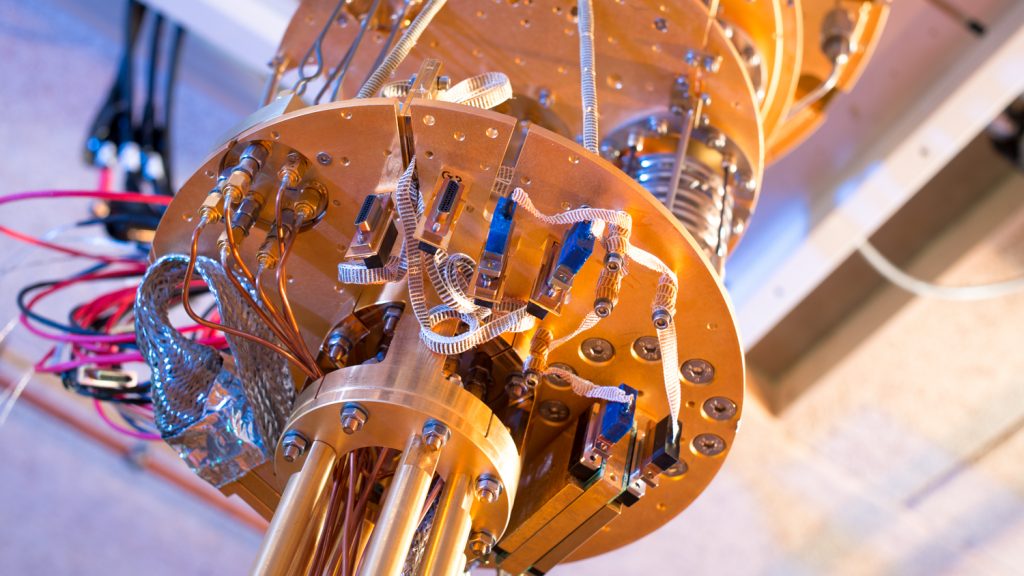
Microsoft offers a holistic strategy to provide all of the technology required to achieve commercial impact with quantum—from development to deployment. This method innovates at all tiers of the computer stack in parallel, including controls, software, and development tools and services. It also involves a significant ongoing effort on developing the topological qubit to aid in the realization of scalable, stable quantum computing.
Products and Technologies
Microsoft Azure Quantum – Microsoft revealed in 2020 that its Azure Quantum which was at that time in restricted preview. Azure Quantum, first unveiled at Microsoft Ignite 2019, combines hardware from IonQ, Honeywell, QCI, and Microsoft, as well as services from 1QBit and the Azure cloud’s traditional computing capabilities. With the transition to restricted preview, Microsoft is now allowing the service to be accessed by a small number of select partners and consumers.
Q# and the Quantum Development Kit – Q# is Microsoft’s high-level quantum-focused programming language, which provides a simple and modern approach to quantum program development. To build quantum programs, Q# allows users to focus their efforts at the algorithm and application levels.
The Quantum Development Kit is a toolkit for developing Q#, Microsoft’s quantum-focused programming language, and Azure Quantum, Microsoft’s quantum cloud platform. The open-source Quantum Development Kit for Q# and Azure Quantum enables users to create long-lasting quantum applications for quantum hardware today and future scalable hardware. The Quantum Development Kit also includes tools for creating optimization problems that can be performed on large-scale or hardware-accelerated computation resources in Azure.
Microsoft announced intentions to provide an open cloud quantum computing service in private preview in 2019. That year, Microsoft made its Quantum Development Kit and Q# compilers and simulators available to developers. Partnerships with quantum hardware suppliers such as Honeywell, IonQ, or QCI would allow developers to utilize current Microsoft tools such as Visual Studio or the Quantum Development Kit in conjunction with quantum computers.
Microsoft announced improvements to their Quantum Development Kit in 2018, including more open-source libraries and Python compatibility. These upgrades would make the quantum computing capability available to even more developers on a wider range of systems. Capabilities for creating Q# quantum apps on macOS and Linux, as well as integration with VS Code and quantum simulation support, are among the most notable additions.
Quantum computers can solve the world’s most difficult computing problems while also changing the economic, industrial, academic, and sociological landscapes. To implement these possible uses, Microsoft released a new chemistry library in 2018 that allows scientists to simulate chemical interactions and investigate quantum algorithms for real-world applications in the chemistry domain. The library includes cutting-edge Q# implementations of techniques for Hamiltonian simulation as well as integrations with NWChem, an open-source high-performance computational chemistry software program.
Collaborations
Ally collaborates with Microsoft Azure to prepare a workforce for quantum computing
Ally Financial, a US fintech, will collaborate with Microsoft on Azure Quantum solutions in 2021 to build quantum computing capabilities and investigate how new algorithms and future quantum hardware may improve customer experience.
The company is working with Microsoft as part of its Enterprise Acceleration Program (EAP) to resolve optimization issues and to use available, rich data to help financial services professionals make better decisions, learn why a customer may contact a call center, manage portfolios, and streamline business processes.
Microsoft and The Innovation Lab at Naval Surface Warfare Center Dahlgren Division (NSWCDD) collaborated to organize a Quantum Computing hackathon
Microsoft and The Innovation Lab at Naval Surface Warfare Center Dahlgren Division (NSWCDD) partnered to conduct the first-ever hackathon in 2021. The event began with a ‘quantum computing boot camp’ conducted by Microsoft quantum computing experts. Participants in NSWCDD’s debut hackathon were challenged to solve given challenges using Microsoft’s quantum computing tools. This hackathon’s objective was to get the workforce thinking about quantum computing.
United States National Laboratories collaborates with Microsoft for a commercial-scale quantum computer
In support of the National Quantum Initiative, the United States Department of Energy (DOE) announced the establishment of 5 interdisciplinary Quantum Information Science Research Centers in 2020. It is one of the greatest investments in this sector made by the United States government. It is also a significant milestone for Microsoft, which provides scientific leadership as well as experience in workforce development and technology transfer.
Microsoft, along with Oak Ridge National Laboratory, Los Alamos National Laboratory, Fermi National Accelerator Laboratory, and Purdue University, is one of the 5 core founding partners of one of the newly created centers, the Quantum Science Center (QSC). Microsoft is a partner in the Q-NEXT center, directed by Argonne National Laboratory and joined by Stanford Linear Accelerator Center, in addition to the Quantum Science Center.
Finally, Microsoft is a member of the Quantum Science Accelerator Center’s External Advisory Board, which is chaired by Lawrence Berkeley National Laboratory and includes Sandia National Laboratory. Pacific Northwest National Laboratory (PNNL), a long-time DOE Lab collaborator with Microsoft and co-founder of Northwest Quantum Nexus, will also take part in QSC and Q-NEXT. Microsoft and PNNL will continue their work on quantum chemistry, algorithms, and tools at each of these Centers, building on previous discoveries using NWChem and the QDK.
A collaboration between Microsoft and the University of Copenhagen for quantum computing
In 2020, researchers from Microsoft’s Quantum Materials Lab and the University of Copenhagen collaborated to create an important and promising material for usage in a future quantum computer. To that objective, the researchers would develop materials that can retain sensitive quantum information while also protecting it from decoherence.
Research results are frequently the product of a large number of people working together closely. Professor Peter Krogstrup, Scientific Director at the Microsoft Materials Lab, and Yu Liu, a postdoc at the Niels Bohr Institute grew the materials in this case. Saulius Vaitiekenas, Lead experimentalist at the Microsoft Quantum Materials Lab, carried out the measurements and built the devices, and Professor Charles Marcus at the Niels Bohr Institute, along with everyone else, interpreted the resulting data.
“There may be different roles and competencies involved, but the process of collaborating on science is most times a very fluid and open-ended process.”
– Charles Marcus, Professor at the University of Copenhagen.
Microsoft, National Science Foundation, AWS, and IBM Collaborate on Quantum Computing Research
In 2020, the National Science Foundation (NSF) collaborated with Microsoft, one of the world’s major cloud platform providers, to increase university research and capability for quantum computing development. The National Science Foundation (NSF), an independent federal agency that supports fundamental research and education in all non-medical fields of science and engineering, is now collaborating with Amazon Web Services (AWS), IBM, and Microsoft Quantum to provide cloud-based quantum computing platforms for this research.
The news was posted on the NSF’s website in a ‘Dear Colleagues’ letter from Margaret Martonosi, Assistant Director for Computer and Information Science and Engineering (CISE), and Anne Kinneyon, Assistant Director for Mathematical and Physical Sciences (MPS). The letter stated that the government would approve supplementary funding requests to allow the use of quantum-computing cloud platforms from Amazon Web Services, IBM, and Microsoft. Microsoft’s quantum business offers a suite of tools and services for quantum developers and researchers, ranging from prebuilt solutions to software and quantum hardware.
Microsoft and IonQ collaborated to power Azure Quantum
At the annual Ignite conference, in 2019, IonQ announced the launch of Azure Quantum in collaboration with Microsoft. Azure Quantum is a full-stack, open cloud ecosystem that has commercialized IonQ’s quantum computers, based on trapped ions, letting users gain from IonQ’s unique approach to quantum computing. This collaboration allowed Microsoft Azure Quantum users to execute their computations on the world’s most efficient quantum computer while utilizing current Microsoft tools including Q#, QDK, and Visual Studio. This collaboration enabled IonQ to concentrate on quantum hardware while benefiting from Microsoft’s ongoing innovation in quantum software tools.
Microsoft Quantum announced a new collaboration with leading startups
Microsoft announced collaborations with some of the world’s best Startup talent in Quantum Software and algorithm development in December 2018. 1QBit, Cambridge Quantum Computing, Entropica Labs, OTI Lumionics, ProteinQure, QC Ware, Qulab, Riverlane Research, Solid State AI, Strangeworks, and Zapata Computing would be able to consult directly with Microsoft’s top Quantum Researchers, Scientists, and Engineers, as well as gain deeper access to Microsoft’s advanced quantum software, tools, and libraries such as the QC Ware (QDK). Their participation includes membership in Microsoft for Startups, an exclusive program that provides qualified startups with access to Microsoft technologies, including free Azure cloud, as well as dedicated go-to-market resources to assist them in selling alongside Microsoft’s global sales teams and partner channel.
Google Quantum AI is enhancing the state of the art in quantum computing and building tools that will allow researchers to work beyond traditional capabilities. The software and hardware are specially developed for the development of innovative quantum algorithms to assist in the solution of near-term applications for practical problems.
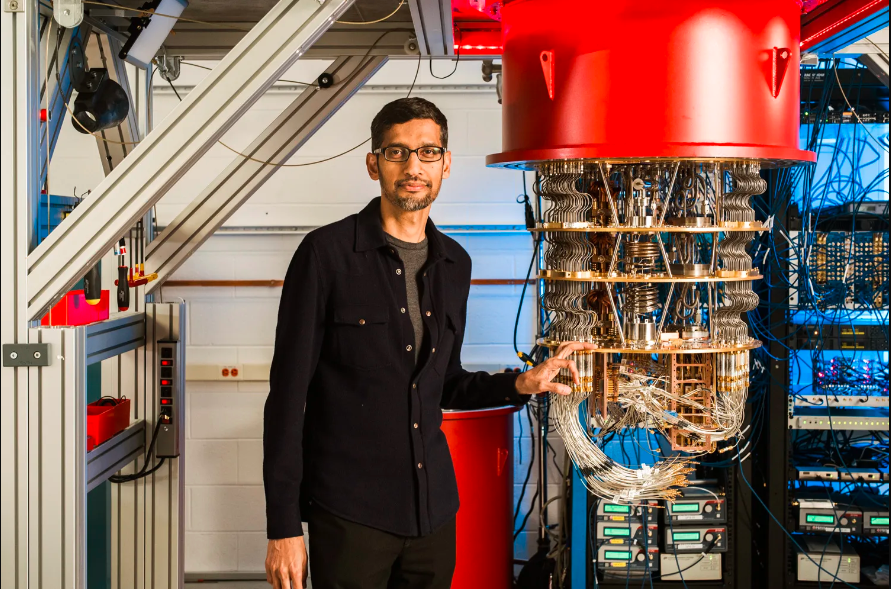
The Google Quantum AI lab’s objective is to create a quantum computer that can tackle real-world problems. Google aims to investigate near-term applications that are forward compatible with a large-scale universal error-corrected quantum computer. It takes more than a huge number of qubits for a quantum processor to be able to perform algorithms that are beyond the scope of conventional simulations. Importantly, the processor must have low error rates on reading and logical operations like single and two-qubit gates.
Products and Technologies
Cirq – An open-source framework for developing quantum computers. Cirq is a Python software package that allows users to create, manipulate, and optimize quantum circuits before executing them on quantum computers and quantum simulators. It provides valuable abstractions for dealing with today’s noisy intermediate-scale quantum computers, where hardware specifics are critical for attaining cutting-edge results.
OpenFermion – The open-source chemistry package for quantum computers is known as OpenFermion. It is a library for building and evaluating quantum algorithms for simulating fermionic systems, including quantum chemistry. The package includes everything from efficient data structures for expressing fermionic operators to fermionic circuit primitives for execution on quantum devices. Plugins for OpenFermion offer users an efficient and low-overhead method of converting electronic structure computations into quantum circuit simulations.
TensorFlow Quantum (TFQ) – TensorFlow Quantum (TFQ) is a quantum machine learning library that allows for the rapid development of hybrid quantum-classical Machine Learning models. TFQ library can be used to research quantum algorithms and applications that make use of Google’s quantum computing frameworks. TensorFlow Quantum is focused on quantum data and the construction of hybrid quantum-classical models. It incorporates Cirq-designed quantum computing algorithms and logic, as well as quantum computing primitives that are compatible with existing TensorFlow APIs and high-performance quantum circuit simulators.
Bristlecone Chip – Bristlecone, Google’s new quantum processor, was unveiled on March 5, 2018, during the annual American Physical Society Conference in Los Angeles. The goal of this gate-based superconducting system is to serve as a research platform for our qubit technology’s system error rates and scalability, as well as applications in Quantum Simulation, optimization, and Machine Learning.
Quantum Computing Service – The platform that allows researchers to access non-traditional computing resources. By giving access to Google’s quantum computing hardware, Google is improving the state of the art in quantum algorithms and applications. Researchers with authorized projects can use the Quantum Computing Service to execute quantum algorithms remotely on Google’s newest quantum processors, such as Sycamore, which has 50+ qubits.
Google provides a quantum computing service to scientists who work on algorithms for noisy-intermediate-scale quantum computers like Sycamore. The objective is to enhance NISQ’s state-of-the-art novel algorithms, tools, and characterizations that lead to meaningful applications. Approved applications will run programs on Sycamore using Google’s Quantum Engine API, and user input will be used to improve the service. Google is presently working with a handful of early access partners and will accept new applications in 2021.
The company announced in 2021 that they want to finish constructing an ‘Error-Corrected Quantum Computer’ by the end of the decade, or by 2029. It also announced its Quantum AI campus, which would strive to create a large-scale business, error-free scientific computations, and hundreds of jobs. It also seeks to expedite answers to some of the world’s most pressing issues, such as sustainable energy, decreased emissions to feed the world’s expanding population, and the discovery of new scientific breakthroughs, such as better functioning Artificial Intelligence (AI).
Google intends to offer its quantum-computing solutions via the cloud, and it is interested in the multi-utility of technology, such as creating more energy-efficient batteries and launching a new fertilizer-making method that produces less CO2.
Google published the results of the Quantum Supremacy Experiment in the Nature article, ‘Quantum Supremacy Using a Programmable Superconducting Processor’ on October 23, 2019. To accomplish the benchmark testing, Google created a new 54-qubit processor called ‘Sycamore,’ which is made up of fast, high-fidelity quantum logic gates. Google’s system completed the goal computation in 200 seconds, and they calculated that it would take the world’s fastest supercomputer 10,000 years to get a similar result.
Collaborations
Google collaborates with Boehringer Ingelheim to develop new medicines using Quantum Computing
In January 2021, Google’s Quantum AI group announced a collaboration with the German pharmaceutical giant Boehringer Ingelheim to create novel medicines using quantum computing. Boehringer Ingelheim and Google want to focus on integrating quantum computing in pharmaceutical research and development, including molecular dynamic simulations, through this cooperation. Boehringer Ingelheim would concentrate on computer-aided drug discovery and in silico modeling, whereas Google would provide quantum computers and algorithms.
“Together with Google, our goal is to apply the use of quantum computing in biopharmaceutical R&D and thus continue to make a decisive contribution to medical progress for patients around the world.”, Michel Pairet, Board Member of Innovation Unit at Boehringer Ingelheim.
Boehringer Ingelheim claimed to be the world’s first pharmaceutical firm to collaborate with Google on quantum computing. The Three-year collaboration is co-led by Boehringer Ingelheim’s newly formed Quantum Lab.
IonQ quantum computing systems available on Google Cloud
On June 17, 2021, IonQ announced that its high-fidelity 11-qubit systems will be accessible on Google Cloud, with assistance from Google’s Cirq open-source quantum computing platform. According to the firm, its next-generation 32-qubit system will be accessible on Google Cloud later this year. IonQ is the first third-party quantum computer to be made accessible through Google Cloud’s marketplace.
The availability of IonQ’s quantum systems on Google Cloud implies that they will be available on all three hyper-scale cloud providers. IonQ, which plans to go public through a special purpose acquisition company transaction, is already accessible on AWS and Microsoft Azure.
Customers will be able to program IonQ’s systems on Google Cloud using a variety of developer frameworks such as Cirq, IBM Qiskit, Penny Lane, and Tket. Custom integrations are also possible using IonQ’s APIs.
Google collaborates with the University of Waterloo, X, and Volkswagen for TensorFlow Quantum
On March 9, 2020, Google announced the release of TensorFlow Quantum (TFQ) in partnership with the University of Waterloo, X, and Volkswagen. TFQ provides the tools required to bring the Quantum Computing and Machine Learning research groups together to control and model natural or artificial quantum systems, such as Noisy Intermediate Scale Quantum (NISQ) processors with 50 – 100 qubits.
TFQ integrated Cirq with TensorFlow and provided high-level abstractions for the design and implementation of discriminative and generative quantum-classical models by providing quantum computing primitives compatible with existing TensorFlow APIs, as well as high-performance quantum circuit simulators.
Google continued the collaboration with Kitchener-Waterloo’s Quantum Benchmark
In 2018, the Google-Quantum Benchmark partnership was initially announced, with the firm stating that Google will integrate Quantum Benchmark’s True-Q software solution into Cirq, Google’s open-source quantum framework. The integration was designed to assist Cirq users in solving difficult issues on existing hardware while also allowing them to describe, conceal, fix, and validate errors.
Google and NASA Achieve Quantum Supremacy
On October 23, 2019, Google, in collaboration with NASA and Oak Ridge National Laboratory, demonstrated the capacity to calculate in seconds what even the most powerful and advanced supercomputers would take thousands of years to compute, reaching a milestone known as Quantum Supremacy.
“Quantum computing is still in its infancy, but this transformative achievement rockets us forward. Our missions in the decades to come to the Moon, Mars, and beyond are all fueled by innovations like this one.”
– Eugene Tu, Center Director at NASA’s Ames Research Center in California’s Silicon Valley.
Bristlecone, Google’s 72-qubit quantum device, would compete with the Pleiades, NASA’s world-class supercomputer, in early 2019. The Space Act Agreement was signed in July 2018 by Google and NASA. The agreement allowed NASA to study and compare Bristlecone results with Pleiades data in an attempt to demonstrate quantum supremacy. Bristlecone’s successful showcase would be a watershed moment in Quantum Computing history.
Bristlecone would be linked to NASA’s Quantum Artificial Intelligence Laboratory using Google’s Cloud API (QuAIL).
The two companies would work together to map a ‘wide range of optimization and sampling issues’ to Bristlecone’s gate-model quantum computing technology. QuAIL will have access to Google’s quantum processor and software until at least 2023 under the terms of the five-year deal. As a consequence, QuAIL would offer technical assistance such as mappings, enhanced circuit simulation methodologies, more efficient compilations, and circuit simulation results.
D-Wave Systems of Canada announced in 2013 that one of its quantum computers has been deployed at NASA’s Ames Research Center in California. NASA, Google, and the Universities Space Research Association (USRA) would utilize the new 512-qubit device, named D-Wave Two, to study how quantum computers may be used to tackle a variety of issues. D-Wave, located in Vancouver, predicted that the computer would be ready for usage in the third quarter of that year.
D-Wave stated in a statement that day that the facility will be used to ‘create solutions for a wide variety of challenging issues such as machine learning, online search, speech recognition, planning and scheduling, searching for exoplanets, and supporting operations in mission control centers.’ The technology would be available to researchers in the United States through the USRA.
UCL partners with Google to grow the quantum software industry in the UK
On September 25, 2018, UCL and Google announced a £5.5 million Prosperity Partnership to leverage the transformative power of quantum computers for applications in modeling and simulation. The project, funded by the Engineering and Physical Sciences Research Council (EPSRC), is a cooperation between the UCL Quantum Science and Technology Institute, Google Quantum AI Lab, and the University of Bristol Quantum Information Institute. It also comprises UK start-ups GTN and PhaseCraft.
The collaboration would research and develop quantum software for modeling and simulation, and its efforts would contribute to the establishment of a quantum software industry in the United Kingdom. According to John Morton, Professor at UCL Quantum Science and Technology Institute, “Quantum computers are poised to surpass the capabilities of today’s supercomputers. This partnership will develop quantum software to exploit this computational power, leading to the discovery of new materials, chemicals, and drugs, impacting sectors including energy, transport, and healthcare.”
Amazon
Amazon is building the framework for a quantum computer, advancing attempts to harness technology that can crunch huge amounts of data in seconds that even the most powerful supercomputers take hours or days to analyze. The tech giant is looking for a Quantum Hardware Team to work in their Amazon Web Services Center for Quantum Computing. Amazon announced its entry into the market in 2019 and, in August, released Braket, its first quantum computing service, which allows cloud clients to experiment with quantum algorithms run on AWS.
Furthermore, its Quantum Solutions Lab engagements are joint research programs that enable one to engage with renowned specialists in quantum computing, machine learning, and high-performance computing.
Products and Technologies
Amazon Braket – A fully managed quantum computing service that assists academics and developers in getting started with the technology to speed study and discovery. Amazon Braket provides a development environment for users to explore and design quantum algorithms, test them on quantum circuit simulators, and run them on various quantum hardware technologies.
Users of Amazon Braket can create and build their quantum algorithms from scratch or pick from a library of pre-built algorithms. Once the algorithm is developed, it offers a variety of simulators for testing, troubleshooting, and running the algorithms. Users may execute their algorithms on a variety of quantum computers, including D-Wave Quantum Annealer and Rigetti and IonQ gate-based computers.
On December 2, 2019, the company announced three key initiatives as part of the company’s plans to help advance quantum computing technologies, including Amazon Braket, Amazon Quantum Solutions Lab, and the AWS Center for Quantum Computing, which would bring together quantum computing experts from Amazon, the California Institute of Technology (Caltech), and other top academic research institutions to collaborate on the project.
In August 2020, Amazon Web Services announced the cloud-based service was fully open for business, eight months after introducing its Amazon Braket quantum computing platform. According to Bill Vass, Vice President of AWS Technology, Braket serves as a launching pad for those interested in knowing more about quantum computing. According to Amazon, the platform would be available to all users in AWS’ US East (Northern Virginia), US West (Northern California), and US West (Oregon) regions. Braket would be available in other locations as part of a gradual deployment.
Amazon Quantum Solutions Lab – The lab engages in collaborative research initiatives that allow customers to collaborate with renowned specialists in Quantum Computing, Machine Learning, and high-performance computing. The apps assist users in researching and identifying the most potential uses of quantum computing for their businesses, as well as in becoming quantum ready. Amazon Quantum Solution Lab experts will ‘work backward’ with users to dive deep and learn about the science of quantum computing, develop and benchmark new algorithms and solutions, and build the internal expertise and strategies needed to prepare users’ organizations for the future of quantum computing.
On April 20, 2021, Amazon revealed that their new Quantum Computer Design Relies On Tiny Schrödinger’s Cats.
Schrödinger’s Cat is a thought experiment in which a quantum event suspends a cat in a box in a liminal state between life and death: the animal only becomes definitively alive or dead when someone looks inside the box. The company has now released a new theoretical design for a quantum computer that is based on merging hardware copies of several Schrödinger’s cats.
Collaborations
MeITY and AWS announced Quantum Computing Applications Lab in India
On January 19, 2021, the Ministry of Electronics and Information Technology (MeitY) announced the development of a Quantum Computing Applications Lab in collaboration with Amazon Web Services. The move would provide chosen academics and scientists access to Amazon’s Braket cloud-based quantum computing service. According to Ajay Sawhney, Secretary at MeitY, “The area of quantum computing is at a very nascent stage in the country. The Lab is a great opportunity for our researchers, whether they are in educational institutions, in research labs, or the startup environment.”
The selected proposals will get AWS credits to use Amazon’s quantum computing cloud platform. The Lab will next give the applicants on-demand and free access to quantum computing hardware, simulators, and programming tools via Amazon Braket.
“The Quantum Computing Application Lab in collaboration with AWS is the first lab on AWS that’s aligned to a government mission. We are trying to pull all of the resources needed to really build the capacity and the skills within India to be able to propagate this technology in a meaningful way.”
– Rahul Sharma, President of Public Sector at AISPL, AWS India and South Asia
AWS, Hebrew University join forces in quantum computing research
On April 12, 2021, AWS collaborated with the Hebrew University of Jerusalem on a new quantum computing venture as part of the company’s ongoing efforts to investigate this field of research, which began in 2019. These include Amazon Braket, a cloud-based quantum computing service designed to speed research and discovery, the Amazon Quantum Solutions Lab, which assists companies in exploring quantum applications, and the AWS Center for Quantum Computing, a research and development organization.
The latest AWS collaboration with Hebrew University will fund a team of researchers from the academic institution’s Quantum Information Science Center (QISC), which was founded in 2013, and the Racah Institute of Physics to advance understanding of quantum gates, which are fundamental building blocks of quantum computers. This is the first time AWS has collaborated with an Israeli academic institution in the field.
“We are at a unique moment in the history of science when abstract theoretical ideas can progress quickly to become pragmatic technology accessible through on-demand cloud services, with potentially enormous impact on human society over time. It is my great privilege to be part of this process.”
– Alex Retzker, Professor at Hebrew University.
Italian National Institute for Nuclear Physics, AWS to Accelerate Quantum Computing Research
On June 17, 2021, The Italian National Institute for Nuclear Physics and AWS announced a new collaboration to expand scientific knowledge regarding quantum computing within the Italian research community and to identify potential applications in high-energy physics and fundamental physics. AWS is giving access to Amazon Braket quantum computing capabilities for the INFN’s community, which comprises associate researchers from up to 26 institutions around Italy, as part of this cooperation. The partnership also demonstrates AWS’s commitment to providing the most comprehensive set of cloud services to the Italian academic and research sectors, as well as through the AWS Europe (Milan) Region, which was launched in April 2020.
“The scientific opportunities opened by quantum computing are vast and we are excited to be pioneering together with INFN and look forward to supporting them in breaking ground in such areas as fundamental physics, education, medical, healthcare, and technology.”
– Simone Severini, Director of Quantum Computing at AWS
AWS, Microsoft, National Science Foundation, and IBM collaborated on Quantum Computing Research
In 2020, The National Science Foundation collaborated with AWS, IBM, and Microsoft Quantum to provide cloud-based quantum computing platforms for research. The NSF made the news in a ‘Dear Colleagues’ letter, stating that the agency will approve supplementary funding requests to allow the use of quantum-computing cloud platforms from Amazon Web Services, IBM, and Microsoft.
Intel
Intel Labs’ work on quantum computing is based on continuing internal research, collaborative connections, and funding from academia and industry throughout the world, as well as Intel’s expertise in silicon manufacturing processes. For decades, research has been continuing, progressing from a theoretical level with thought experiments for much of the 20th century with the first functioning hardware components for quantum computing produced just in the last few years.
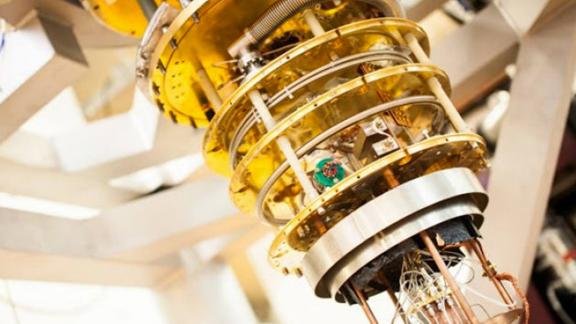
Intel Labs is developing quantum processors in Oregon and doing system-level engineering to achieve production-level quantum computing over the next 10 years.
Products and Technologies
Tangle Lake – it is a superconducting quantum processor that integrates 49 qubits in a device produced at Intel’s 300-millimeter fabrication facility in Hillsboro, Oregon. This device is the third generation of Intel’s quantum computers, scaling up from 17 qubits in its predecessor.
Horse Ridge – It’s a first-of-its-kind cryogenic control chip that would accelerate the development of full-stack quantum computing systems. The chip enables the control of multiple quantum bits (qubits) and lays the groundwork for scaling bigger systems, marking a significant step toward quantum practicality. Horse Ridge was created in collaboration with Intel’s research collaborators at QuTech, a collaboration between TU Delft and TNO (Netherlands Organization for Applied Scientific Research), and is built utilizing Intel’s 22nm FinFET Low Power (22FFL) Technology. The capacity of Intel to develop, test, and optimize a commercially viable quantum computer would be greatly accelerated by the in-house production of these control chips.
According to James Clarke, Director of Quantum Hardware at Intel, “While there has been a lot of emphasis on the qubits themselves, the ability to control many qubits at the same time had been a challenge for the industry. Intel recognized that quantum controls were an essential piece of the puzzle we needed to solve in order to develop a large-scale commercial quantum system. That’s why we are investing in quantum error correction and controls. With Horse Ridge, Intel has developed a scalable control system that will allow us to significantly speed up testing and realize the potential of quantum computing.”
Horse Ridge II – Horse Ridge II, Intel’s second-generation cryogenic control chip, focuses on addressing scalability, one of quantum computing’s most significant challenges. Horse Ridge II provides increased capabilities and deeper degrees of integration for elegant control of the quantum system. New capabilities include the ability to alter and read qubit states as well as adjust the potential of many gates necessary to entangle multiple qubits.
“With Horse Ridge II, Intel continues to lead innovation in the field of quantum cryogenic controls, drawing from our deep interdisciplinary expertise bench across the Integrated Circuit design, Labs, and Technology Development teams. We believe that increasing the number of qubits without addressing the resulting wiring complexities is akin to owning a sports car, but constantly being stuck in traffic. Horse Ridge II further streamlines quantum circuit controls, and we expect this progress to deliver increased fidelity and decreased power output, bringing us one step closer toward the development of a ‘traffic-free’ integrated quantum circuit.”
– James Clarke, Director of Quantum Hardware at Intel
Cryoprober – The Cryoprober is important to the company’s continuing quantum computing development. Quantum computing promises that it will be able to solve immensely complicated problems that are currently beyond the capabilities of even the most powerful supercomputers.
On March 15, 2021, during the American Physical Society meeting that week, researchers from Intel Labs and the Components Research Group will deliver 10 technical papers on Quantum Computing, including two that disclose technical results from Cryoprober research for the first time.
The Cryoprober was designed and built by Intel in collaboration with the Finnish companies Bluefors and Afore. It landed in Oregon last year and has been operating consistently for the past six months following a shakedown period. The Cryoprober has significantly accelerated Intel developers’ ability to perfect new microscopic computer devices such as spin qubits and quantum dots. The ultra-low temperatures are required because quantum computing equipment, at least for the time being, only works at extreme cold.
Collaborations
Intel and QuTech Demonstrate Advances in Solving Quantum Interconnect Bottlenecks
On May 12, 2021, Intel and QuTech formed a partnership between the Delft University of Technology and the Netherlands Organization for Applied Scientific Research and published key findings in quantum research to address the ‘interconnect bottleneck’ which exists between quantum chips that stay in cryogenic dilution refrigerators and the complex room-temperature electronics that control the qubits. The breakthroughs were reported in Nature, the world’s premier peer-reviewed science magazine, and represent a major step forward in solving one of the most difficult problems to quantum scalability using Intel’s cryogenic controller chip Horse Ridge.
“Our research results, driven in partnership with QuTech, quantitatively prove that our cryogenic controller, Horse Ridge, can achieve the same high-fidelity results as room-temperature electronics while controlling multiple silicon qubits. We also successfully demonstrated frequency multiplexing on two qubits using a single cable, which clears the way for simplifying the ‘wiring challenge’ in quantum computing. Together, these innovations pave the way for fully integrating quantum control chips with the quantum processor in the future, lifting a major roadblock in quantum scaling.”, Stefano Pellerano, Principal Engineer at Intel Labs.
Intel Collaborates with Argonne National Laboratory, DOE in Q-NEXT Quantum Computing Research
On August 26, 2020, Intel stated that it is one of the premier US Quantum Technology Firms to be included in Q-NEXT, one of five new national quantum research institutes created by the White House Office of Science and Technology Policy (OSTP) and the United States Department of Energy (DOE). Q-NEXT, or the National Quantum Information Science Research Center, is led by Argonne National Laboratory and brings together world-class researchers from national laboratories, universities, and leading technology companies to ensure the United States’ scientific and economic leadership in this rapidly evolving field. Intel would be able to actively contribute to the industry’s work on quantum computing as a result of the cooperation.
Intel Joins Chicago Quantum Exchange to Advance Quantum Computing
On July 7, 2020, Intel and six other organizations joined the Chicago Quantum Exchange (CQE), a growing intellectual hub for quantum technology research and development. The community, which also includes Microsoft, JP Morgan Chase, Quantum Design, Qubitekk, Rigetti Computing, and Zurich Instruments, would exchange knowledge and cooperate on contributions to further advance the quantum revolution.
Intel and QuTech Demonstrate High-Fidelity ‘Hot’ Qubits for Practical Quantum Systems
On April 15, 2020, Intel, in cooperation with QuTech, released an article in Nature demonstrating the successful management of ‘hot’ qubits, the fundamental unit of quantum computing, at temperatures greater than 1 kelvin. Individual coherent control of two qubits with single-qubit fidelities of up to 99.3% was also highlighted in the study. These achievements show the possibility for cryogenic controls of a future quantum system and silicon spin qubits, which resemble a single electron transistor, to be combined in an integrated package.
“This research represents a meaningful advancement in our research into silicon spin qubits, which we believe are promising candidates for powering commercial-scale quantum systems, given their resemblance to transistors that Intel has been manufacturing for more than 50 years. Our demonstration of hot qubits that can operate at higher temperatures while maintaining high fidelity paves the way to allow a variety of local qubit control options without impacting qubit performance.”
– Jim Clarke, Director of Quantum Hardware at Intel Labs
Intel Spotlights Research in Silicon Spin Qubits and Quantum Applications Development at American Physical Society
On March 4, 2019, During the American Physical Society (APS) March Meeting in Boston researchers from Intel Labs demonstrated the progress they were making toward developing a commercially viable quantum computing system, including breakthroughs in hardware and software development for the quantum computing stack, as well as the development of a tool which would rapidly speed up the research and optimization of scalability.
Since establishing its collaborative research program with QuTech in 2015, Intel has been driving research to realize the promise of quantum computing, delivering advancements spanning the entire quantum stack from qubit devices to the hardware and software architecture necessary to handle these devices, as well as quantum applications.
Toshiba
Toshiba aims to protect global communications against dangers presented by breakthroughs in computers and mathematics. At a time when technological advancement has resulted in nearly continuous data expansion, the necessity for the safe transfer of sensitive information has never been greater. Toshiba intends to provide the world’s top cyber-physical-system technologies to secure individuals’ and businesses’ private information.
Its Quantum Key Distribution (QKD) solution secures network connections by utilizing the underlying rules of quantum physics. Toshiba’s industry-leading approach to information technology, based on decades of scientific study, enables companies to modernize their IT infrastructure with the most secure communications available today.
Products and Technologies
Quantum Key Distribution – QKD is a method of distributing secret digital keys that are crucial for securing extremely sensitive data in various sectors. It secures data in the Banking, Defense, Utilities, and Health Sectors, as well as the vital infrastructure that supports our smart cities and smart energy grid. The core of QKD security is based on encoding each bit of the key onto a single photon (particle of light) sent, for example, over a standard optical cable. Because every effort to read the photons changes their encoding, the secrecy of each key can be checked and guaranteed. Unlike other existing security methods, QKD is immune to all future improvements in mathematics and computing, including quantum computer data processing capability.
Toshiba’s QKD offering includes two variants such as the Multiplexed System, which can be operated on data-carrying fiber, and the Long-Distance System, which has the greatest key rate and range possible.
Multiplexed QKD System – The Multiplexed QKD system operates on data-carrying fiber, eliminating the need for expensive dark fiber. It employs a quantum channel with a wavelength in the telecom O-band, which frees up the C-band for consumer traffic. It may function in the traditional mode with a fiber pair carrying unidirectional traffic or with a single fiber carrying bidirectional quantum and classical communications.
Long Distance QKD System – The Long Distance QKD System uses a quantum channel in the telecom C-band to achieve the greatest possible range and secure key rate. Within the C-band, it can handle restricted bandwidths of multiplexed data.
On June 7, 2021, Toshiba Europe’s Cambridge Research Laboratory reported the first demonstration of quantum communications across optical fibers more than 600 kilometers in length. The discovery will enable long-distance quantum-secured information flow across metropolitan regions, and it is a significant step toward constructing the future Quantum Internet.
Toshiba has achieved record distances in quantum communications by employing a unique ‘dual band’ stabilization approach. This transmits two optical reference signals at different wavelengths to reduce phase variations on long fibers. Toshiba discovered that with the new approaches, it is feasible to keep the optical phase of a quantum signal constant to within a fraction of a wavelength, with an accuracy of tens of nanometers, even after transmission across 100s of kilometers of fiber. Without real-time cancellation of these oscillations, the fiber would expand and shrink with temperature variations, scrambling the quantum information.
Collaborations
Quantum Xchange, Toshiba, and Verizon Collaborate on Deploying Quantum Networks In 2021
On May 10, 2021, Quantum Xchange, a leader in quantum-safe products and services for crypto agility and quantum readiness, announced that it would be joining industry-leading experts from its strategic partner Toshiba and joint customer Verizon at the Inside Quantum Technology (IQT) New York event, that took place on May 17-19, 2021. The panel discussion concentrated on Verizon’s successful Quantum Key Distribution (QKD) pilot, one of the first carriers in the United States to embrace sophisticated, quantum-based security technologies to enhance network communications and protect data from hackers in the future.
Japan Lines Up Toshiba and NEC for Quantum Research Group
Toyota Motor, Toshiba, NEC, and other well-known Japanese corporations collaborated with the Government on May 5, 2021, to encourage the development of a technology with significant security implications. Around 50 companies, including Fujitsu and Hitachi, are anticipated to join the public-private partnership. The organization intends to establish a corporate structure for the project next year, as well as a fund for investment in the sector.
The research group’s objective is to combine Japan’s quantum knowledge in one location to put the technology to practical use. Collaboration with peers will provide possibilities for firms to apply it to new goods and services.
Toshiba teamed up with Dharma Capital to test the use of quasi-quantum technologies in financial trading
In 2021, Toshiba collaborated with Dharma Capital to test the use of quasi-quantum technologies in financial trading. The experiment will look at the efficiency of high-frequency trading (HFT) methods for Japanese listed companies based on ‘optimal solutions’ given by a quasi-quantum computer called the Simulated Bifurcation Machine from Toshiba.
Toshiba Targets $20bn Quantum Key, Data Encryption Business with Verizon, BT Partnerships
On October 19, 2020, Toshiba announced the forthcoming deployment of commercial Quantum Key Distribution (QKD) platforms to capture a piece of a market projected to be worth $20 billion by 2035.
Toshiba has obtained a contract with the National Institute of Information and Communications Technology (NICT), Japan’s main Research Institution, to deploy QKD at numerous places on their network, according to the tech giant. Verizon and Toshiba, in collaboration with the Quantum Xchange, also tested QKD in September. The system will be delivered in the fourth quarter of this year, with deployment scheduled for April 2021.
Toshiba and Hitachi Partner with IBM in Quantum Computing
On July 30, 2020, IBM announced a research collaboration with Japanese Industry to accelerate breakthroughs in quantum computing, boosting bilateral relations in an emerging and sensitive sector. The new partnership, which includes Toshiba and Hitachi, would receive cloud-based access to IBM’s US Quantum Computers. The group would also have access to an IBM Q System One quantum computer, which IBM has planned to build in Japan in the first half of the next year.
BT and Toshiba Install UK’s First Quantum-Secure Industrial Network
On October 1, 2020, BT Group and Toshiba Europe Limited announced the UK’s first industrial deployment of a quantum-secure network, which would transmit data between the National Composites Centre (NCC), the UK’s world-leading composite research and development facility, and the Centre for Modelling & Simulation (CFMS), a non-profit research organization that pioneers new digital engineering capabilities.
The network, funded by Innovate UK’s AQuaSeC project, illustrated how Quantum Key Distribution (QKD), an essentially non-hackable, cutting-edge technique for sharing encryption keys between locations using a stream of single photons, could be used to protect data traffic between key industrial sites in which security is crucial.
The technological solution has been used to replace a manual technique of physically moving sensitive data on portable storage devices between the NCC and CFMS facilities in Emerson’s Green and Filton in North Bristol, as well as the University of Bristol, reducing time and improving data security.
Revenue Target
On October 19, 2020, Toshiba stated that it planned to generate $3 billion in revenue from its advanced cryptography technology for data protection by 2030, as the Japanese conglomerate scrambled to discover new growth drivers.
With the advancement of quantum computers, Toshiba anticipates the worldwide QKD industry to rise to $12 billion in 10 years, easily deciphering conventional math-based cryptographic keys frequently used in banking, defense, and health care.
The business stated that it has collaborated on prototype QKD projects with Verizon in the United States and BT in the United Kingdom and that it is in negotiations with another South Korean telecommunications service.
Honeywell
Honeywell believes that quantum computing will change the way they do business. That is why Honeywell has spent more than a decade focusing on methods to not only assist architects but also accelerate this tremendous growth of processing capacity and problem resolution. Honeywell will shape the adoption and integration of quantum information systems into the sectors it serves as a leading technology business.
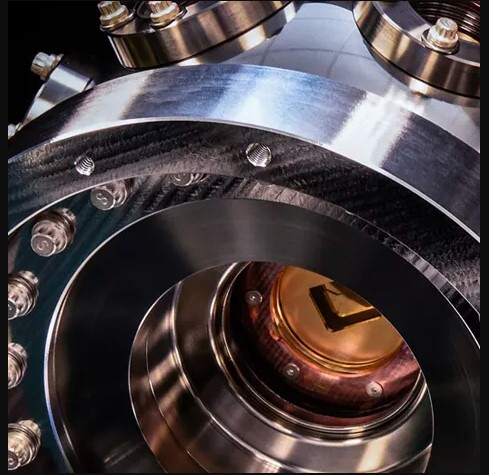
Honeywell’s expertise in science, engineering, and research, along with domain and software experience, allow Honeywell to provide a competitive advantage to its partners and customers after more than 130 years of innovation.
Products and Technologies
High-quality Qubits are made possible by Honeywell’s Quantum Technology. Honeywell’s Trapped ion-qubits, defined in nature by their atomic structure, can be consistently generated and controlled more readily and swiftly than alternative qubit technologies that do not directly employ atoms. That is why they refer to their system as ‘Nature’s Qubit’. Honeywell’s qubits are all identical and free of flaws.
Trapped-ion quantum computers store quantum information in a large number of discrete, charged atoms (ions). Honeywell’s technologies employ electromagnetic fields to retain (trap) each ion, allowing it to be controlled and encoded with microwave signals and lasers.
Honeywell System Model H1 – Honeywell announced a milestone in the early age of quantum computing on October 29, 2020, with the launch of their next-generation quantum computer, the System Model H1. Honeywell’s unique Quantum Charge-Coupled Device1 (QCCD) trapped-ion technology is used in the H1 generation of computers, which are intentionally intended to be swiftly updated throughout their lifetime.
Honeywell’s latest generation quantum computer includes 10 fully connected qubits, an established quantum volume of 128 (the highest measured in the sector), and unique features such as mid-circuit measurement and qubit reuse, which were made possible by Honeywell’s heritage of precision controls expertise. This statement reinforces the company’s commitment to increasing quantum volume by at least an order of magnitude every year for the next five years.
Organizations may use System Model H1 directly through a cloud application programming interface (API), as well as through Microsoft Azure Quantum and channel partners such as Zapata Computing and Cambridge Quantum Computing. Customers can gain access to System Model H1 through a subscription, which grants them access to Honeywell’s most technologically sophisticated quantum computer on the market.
Collaborations
JP Morgan Chase Unleashes Honeywell’s Quantum Computer on Tough Fintech Problems
In July 2020 JPMorgan Chase revealed that they put Honeywell’s quantum computer through its paces, revealing data last week on one of its quantum-computing tests that may help the financial industry secure accounts and make better investing decisions.
The authors published their findings on arXiv, an open-source research website. Papers on arXiv are usually pending peer review. The experiment was carried out on the new Honeywell computer based on trapped-ion technology. The Authors of the JPMorgan paper said, “In this paper, we present a novel, canonical way to produce a quantum oracle from an algebraic expression.”
Zapata Computing Announces Investment from Honeywell Ventures
In 2020, Honeywell Ventures made a strategic investment in Zapata Computing, a leading business software firm for quantum applications. The investment would enable further upgrades to Zapata Computing’s platform and boost the company’s capacity to service its worldwide clients. Before that funding, Zapata Computing has been developing quantum solutions in technical partnership with Honeywell, which announced with intentions to release a powerful trapped-ion quantum computer within the next three months.
“We’re excited to continue working together with Honeywell in close technical and commercial collaboration to bring to market quantum solutions that will create significant and impactful commercial value for our partners.”
– Dr. Christopher Savoie, CEO of Zapata Computing
Microsoft’s Azure Quantum Employs Honeywell Quantum Hardware
During its ‘Ignite’ developer conference in November 2019, Microsoft announced a partnership with numerous firms for quantum computing capabilities running in its Azure cloud computing service, with industrial giant Honeywell among the partners.
Although Microsoft has been working on its quantum circuitry for a long time, the collaboration with Honeywell gives the firm access to Honeywell’s hardware composed of ‘trapped ions’. Of course, an ion is an atom with a net positive or negative electrical charge. The trap in this scenario is a fabricated device, comparable to a computer chip that may be used to manipulate those ions, similar to moving electrons via silicon transistor gates.
Honeywell joins hands with Cambridge Quantum Computing to form a new company
Honeywell announced a merger with Cambridge Quantum Computing (CQC) to establish the world’s biggest independent quantum computing company. The deal, according to Honeywell, will be finalized in the third quarter of 2021 and will lay the stage for what is expected to be a $1 trillion quantum computing sector over the following three decades.
Honeywell will spend between $270 million and $300 million in the yet-to-be-named firm and will own a significant stake. It will also enter into a deal for the production of crucial ion traps required to power quantum technology. Ilyas Khan, the CEO and Founder of CQC, a company that focuses on developing software for quantum computing, will lead the new company. Honeywell Chairman and CEO Darius Adamczyk will serve as the new company’s Chairman, while Tony Uttley, presently the President of HQS, will serve as the new company’s President.
According to Ilyas Khan, “Joining together into an exciting newly combined enterprise, HQS, and CQC will become a global powerhouse that will develop and commercialize quantum solutions that address some of humanity’s greatest challenges while driving the development of what will become a $1 trillion industry.”
D-Wave Systems
To solve a problem, D-Wave Systems employ a technique known as Quantum Annealing. Physical systems in nature tend to develop toward their lowest energy state, such as when items slide down hills or heated things cool down. This is also true for quantum systems.
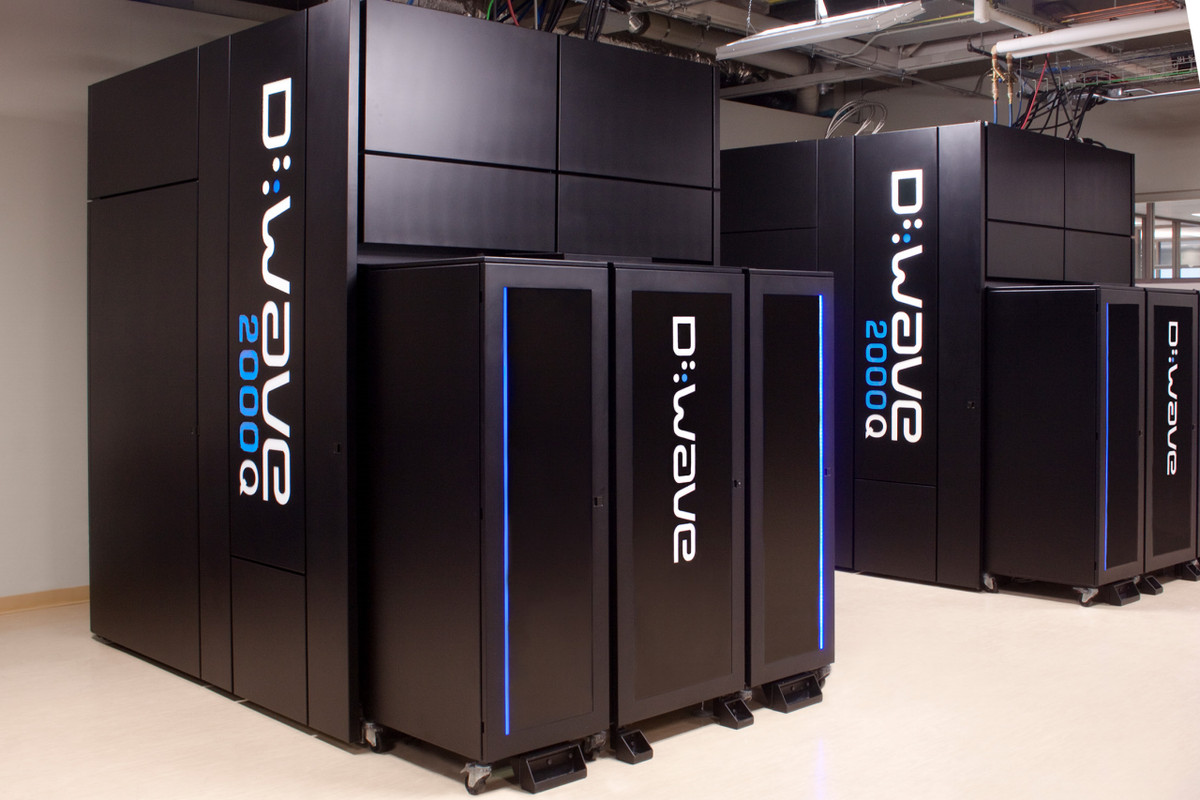
Since a quantum computer is probabilistic rather than deterministic, it may generate a large number of extremely excellent responses in a short period, thousands of samples in one second. This not only gives the greatest solution discovered but also additional extremely good options from which to pick. D-Wave’s open-source Ocean software development kit (SDK), which is accessible on GitHub and in Leap, makes application creation easier by providing built-in algorithm templates as well as the opportunity to write new code in the familiar programming language Python.
Some of the world’s most sophisticated enterprises employ D-Wave systems, including Lockheed Martin, Google, NASA Ames, Volkswagen, DENSO, USRA, USC, Los Alamos National Laboratory, and Oak Ridge National Laboratory. D-Wave has received over 160 US patents and has published over 100 peer-reviewed publications in prestigious scientific journals.
Products and Technologies
D-Wave Technology – D-quantum Wave’s computer uses quantum dynamics to speed and allow novel approaches to discrete optimization, sampling, material science, and machine learning issues. It employs a technique known as quantum annealing, which makes use of real-world quantum systems’ innate proclivity to discover low-energy states. If an optimization issue is compared to a landscape of peaks and valleys, each coordinate represents a potential solution, and its height reflects its energy. The optimal option is the one with the lowest energy, which corresponds to the lowest point in the landscape’s deepest valley.
D-Wave Advantage – D-Wave Advantage is its next-generation quantum computing platform that incorporates new hardware, software, and tools to enable and accelerate the delivery of in-production quantum computing applications. The platform, which is now available in the Leap quantum cloud service, comprises the Advantage quantum system, which has over 5000 qubits and 15-way qubit connection, as well as an enhanced hybrid solver service that can execute problems with up to one million variables. For the first time, the combination of Advantage’s processing capacity and the scale to handle real-world issues with the hybrid solver service in Leap enables enterprises to execute performant, real-time, hybrid quantum applications.
Leap – D-Wave Systems Inc.’s quantum cloud service, Leap, was introduced in 2018. It may learn about the different kinds of issues that the D-Wave quantum computer can tackle and conduct interactive demos and coding exercises on the machine.
Leap 2 – It is the first quantum cloud service designed for developers and organizations to easily build and deploy real-world hybrid quantum applications with practical impact. In addition to providing live, real-time access to the D-Wave quantum system, the service enhances the Quantum Application Environment (QAE) to give new tools and resources to accelerate the development and deployment of essential business applications.
Collaborations
Canada Carves Out $40 Million for D-Wave in Quantum Investment Push
On March 11, 2021, The Government of Canada announced a $40 million investment to D-Wave Systems Inc. as part of a broader $120 million investment in quantum computing technology. Such innovations, according to the government, are important for promoting economic growth and job creation, as well as giving a technological and strategic advantage in the global marketplace.
D-Wave will use the cash to create its next-generation system, which will have a more powerful quantum processor, extending the quantum approach’s edge over classical computers. The money will also assist Burnaby, a British Columbia-based firm in expanding access to its cloud-based service.
CINECA and D-Wave Expand Access to Quantum Computing Technology and Resources in Italy
On May 6, 2021, CINECA, the Italian inter-university consortium and one of the world’s leading global supercomputing hubs, and D-Wave Systems announced a formal partnership to provide Italian Universities, researchers, and developers with expanded access to practical quantum computing technology and resources via D-Wave.
CINECA, a consortium of 69 Italian Universities, 25 national research institutes, the Ministry of Education, and the Ministry of Universities and Research, will have enhanced, real-time access to the Leap quantum cloud service. D-hybrid Wave’s quantum/classical solvers, which use both quantum solutions and best-in-class classical algorithms to handle large-scale business-critical issues, are included in this access. With real-time access to quantum computers through the cloud, the Italian and worldwide scientific communities can advance quantum education, publication, and R&D while also accelerating the development of real-world quantum applications.
NEC, D-Wave, and the Australian Department of Defense Collaborate on Quantum Computing Initiative
The Australian Department of Defense chose NEC Australia and D-Wave Systems Inc. to demonstrate the application of hybrid quantum computing technology to address a ‘last mile resupply’ challenge on April 20, 2021. The system facilitates the employment of self-driving trucks to resupply armed units from a central location. NEC Australia and D-Wave were chosen through a competitive proposal process.
“Our focus is the development and delivery of quantum computing for practical business applications and enhanced mission value. NEC Australia has a deep history of delivering value to the Australian Defence industry. We are excited to bring this powerful combination of quantum and domain expertise together to help solve a real problem that will benefit the Australian Army.”
– Alan Baratz, CEO of D-Wave
NEC and D-Wave Begin Joint Quantum Product Development
On June 17, 2020, NEC Corporation and D-Wave Systems Inc. announced that they have initiated cooperative operations to combine the computational power of NEC’s systems with the quantum computing capability of D-systems, Wave’s software, and cloud service to offer those combined capabilities to clients in Japan. In line with this project, NEC has committed a $10 million investment in D-Wave.
The two companies would collaborate on the development of hybrid quantum/classical technologies and services that combine the best features of classical computers and quantum computers, as well as the development of new hybrid applications that use those services and joint marketing and sales go-to-market activities to promote quantum computing.
“Japan has long been a global leader in quantum computing, from the advent of quantum annealing to today’s continued commercial research and development. By combining efforts with NEC, we believe we can bring even more quantum benefit to the entire Japanese market that is building business-critical hybrid quantum applications in both the public and private sectors.”, Alan Baratz, CEO of D-Wave.
USC Renews Quantum Computing Collaboration with D-Wave, Lockheed Martin
On June 24, 2020, The USC-Lockheed Martin Quantum Computing Center based in USC’s Information Sciences Institute (ISI) extended its long-term collaboration with D-Wave and Lockheed Martin resulting in significant facilities renovations. QCC would upgrade to D-next Wave’s Advantage system, which would include more than 5000 qubits. The improvements would allow QCC to host a new generation of D-Wave Advantage Quantum Annealer, as well as the first Leap quantum cloud system in the United States.
Yannis C. Yortsos, the Dean of the USC Viterbi School of Engineering said, “We are very pleased to continue our partnership with Lockheed Martin with the acquisition of the new generation of the D-Wave quantum system.”
Rigetti Computing
Rigetti Computing is an integrated systems corporation that creates quantum computers and the superconducting quantum processors that power them. Rigetti’s Quantum Cloud Services platform provides full-stack quantum capabilities. The machines may be linked to any public, private, or hybrid cloud via their Quantum Cloud Services (QCS) platform.
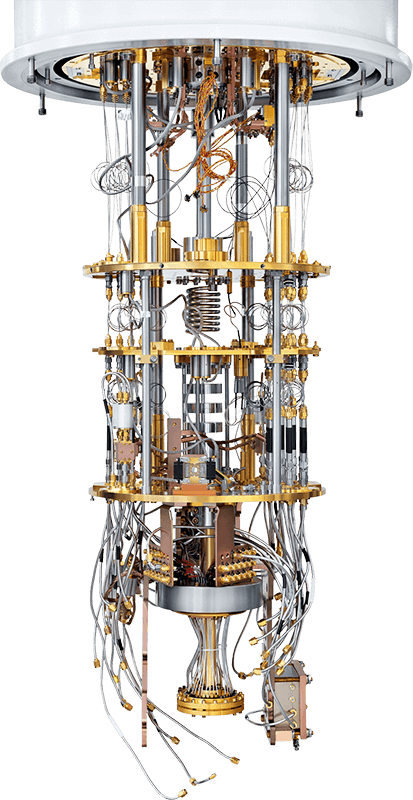
The firm provides the low-latency access necessary for high-performance hybrid quantum-classical computing, as well as the security, scalability, and flexibility of classical resources that meet the computational demands of its clients’ workloads.
Products and Technologies
Fab-1 – Fab-1 is a captive foundry for quantum integrated circuits. Rigetti employs cutting-edge silicon Semiconductor and MEMS processing technologies, as well as innovative manufacturing processes, to create cutting-edge superconducting qubits and device layers for microwave circuits. Their process flows make use of superconducting materials including aluminum, indium, and niobium in a variety of subtractive patterning, etching, lithography, and deposition procedures to produce ultra-low-loss superconducting devices. To maintain a reliable process of record, the business incorporates best practices from industrial and research fabs, while simultaneously performing continuous short loop development testing to optimize for quick learning cycles.
Quil – Rigetti allows integration with a wide range of traditional resources via network APIs. The APIs give access to users in essential quantum operating system operations such as user authentication, system service authorization, circuit submission, circuit scheduling, memory management, and concurrency. The quantum instruction language Quil, created by Rigetti, provides a quantum programming framework for QPUs. Quil is a quantum programming language that combines gate-level and pulse-level representations of quantum systems while integrating conventional instructions and shared memory. All necessary API endpoints anticipate Quil as the description of a quantum program to be run on a Rigetti QPU.
Quil-T – Quil-T is a Quil language extension that allows for the control of the continuous-time dynamics of microwave signals delivered to a quantum integrated circuit. Gate definitions and pulse parameters are configurable with Quil-T. Because Quil-T allows access to the calibrations associated with the native gates implemented on the Rigetti QPU, pulses and pulse timing can be altered. Quil-T is immediately integrated into the regular programming chain via PyQuil, the Quilc compiler, and the Rigetti APIs.
PyQuil – PyQuil is a Python library for developing and running Quil-based quantum applications. PyQuil enables developers to quickly build Quil programs using quantum gates and classical operations, compile and simulate such programs with the Quil compiler (quilc) and the Quantum Virtual Machine (QVM), Rigetti’s quantum simulator, or run them on Rigetti QPUs.
Quilc – Quilc is a compiler that optimizes gate-based quantum programming. It accepts any arbitrary Quil code developed from PyQuil, QISKit, or Cirq as input and generates native Quil optimized for Rigetti QPUs. The compiler may be programmed using an Instruction Set Architecture (ISA) to target any number of native gates and QPU topologies. It may be set to compile to any quantum processor, including non-Rigetti QPUs, using the ISA. Quilc also supports QASM as input, a popular low-level quantum circuit description language.
As an optimized quantum compiler, Quilc can conduct circuit transformations to create optimum circuit implementations for a given Rigetti processor, including taking into consideration the unique one- and two-qubit gate fidelities of a specific QPU. Such optimizations enable developers to create programs quicker while maintaining, or even increasing, their execution fidelity on a particular hardware system. For those who desire exact control over the executable circuit, optimizations can be disabled.
QVM – The Quantum Virtual Machine is Rigetti’s open-source quantum computing simulator. The QVM runs Quil programs, simulating execution with and without noise. The QVM may be customized to support a certain QPU system and is pre-configured to emulate production Rigetti QPUs. With classical control, the QVM replicates the unitary development of a wave function. It incorporates stochastic pure-state development, density matrix evolution, and Pauli noise channels, as well as shared memory access to the resulting quantum state. For quick simulation of large programs with numerous qubits, the QVM may be run in a fast just-in-time compilation mode.
Rigetti Aspen-8 – Building effective quantum software and applications needs access to cutting-edge quantum hardware. Rigetti’s most sophisticated system to date, Aspen-8, provides these features to all QCS integration partners. Aspen-8 was launched on May 5, 2020. This solution is now available to all AWS customers through a partnership with Amazon Braket.
Rigetti has been running quantum computers on the cloud continuously since 2017. With each successive generation, steady increases in the number of qubits and the accuracy of operations move us closer to the tipping point at which quantum computers will begin to surpass classical ones. The systems developed by Rigetti including Rigetti Aspen-7 which was deployed on November 15, 2019, Rigetti Aspen-4 which was deployed on March 10, 2019, Rigetti Aspen-1 which was deployed on November 15, 2018, Rigetti Acorn that was deployed on December 17, 2017, and Rigetti Agave which was deployed on June 4, 2017.
Collaborations
Rigetti Computing joined hands with Riverlane and Astex Pharmaceuticals to advance quantum computing in drug discovery
In 2021, Rigetti UK announced that it will collaborate with Astex Pharmaceuticals and Riverlane to generate an integrated application for simulating molecular systems utilizing Rigetti Quantum Cloud Services, opening the way for a commercial application that could revolutionize drug discovery in pharmaceutical R&D.
“Our consortium brings together a complete quantum supply chain — from hardware to end-user — allowing us to develop a tailor-made solution to address a problem of real value to the pharmaceutical sector. This project lays the groundwork for the commercial application of Rigetti Quantum Cloud Services in the pharmaceutical industry.”
– Mandy Birch, SVP of Technology Partnerships at Rigetti
Oxford Instruments Joins a £10 Million Consortium, To Launch the First Commercial Quantum Computer in the UK
On September 2, 2020, Oxford Instruments NanoScience announced that it would collaborate with a £10 million consortium led by Rigetti Computing to expedite the commercialization of quantum computing in the UK. The three-year effort would construct and operate the UK’s first quantum computer, make it available through the cloud, and explore practical applications in machine learning, materials modeling, and finance. The partnership includes the University of Edinburgh, Phasecraft, a quantum software start-up, and Standard Chartered.
Rigetti would construct the superconducting quantum computer in an Oxford Instruments Proteox dilution refrigerator. The University of Edinburgh would provide new methods for testing quantum hardware and validating the execution of quantum algorithms, as well as collaborate with Standard Chartered Bank to enhance quantum machine learning applications in finance. Furthermore, Phasecraft would harness this technology for near-term applications in materials design, energy, and medicines by using its deep understanding of quantum algorithms and high-efficiency quantum software.
“We are excited to deliver the UK’s first quantum computer and help accelerate the development of practical algorithms and applications.”
– Chad Rigetti, CEO of Rigetti Computing
Rigetti Joins Superconducting Quantum Materials and Systems NQI Center as Lead Industry Partner
On August 26, 2020, Rigetti was selected as the primary industrial partner at the new Superconducting Quantum Materials and Systems Center (SQMS) managed by the US Department of Energy’s Fermilab. SQMS is one of five national institutes established today by the White House as part of the United States National Quantum Initiative to bring about revolutionary advancements in quantum information science.
The initiative provides the Center with $115 million over five years to develop and implement a quantum computer that is beyond state-of-the-art and is based on superconducting technology. SQMS would concentrate on maximizing coherence, which is the amount of time that a qubit can efficiently process information and is currently one of the most significant limiting constraints of quantum systems and devices.
Rigetti Quantum Computers Now Available via Amazon Web Services
On December 2, 2019, Rigetti Computing announced that its quantum computers would be available to users via Amazon Braket, a new, fully managed Amazon Web Services (AWS) solution that allows scientists, researchers, and developers to begin experimenting with computers from quantum hardware providers in a single location. Rigetti had recently joined the AWS Partner Network (APN) as a solutions provider focused on developing quantum computing applications with business customers. Users of Amazon Braket would be able to use Rigetti’s newest quantum computers, which are based on 32-qubit superconducting chip technology. This opens up the possibility for businesses operating scientific or industrial applications on AWS to enhance their operations by incorporating quantum capabilities into their existing application architectures.
“By collaborating with AWS, we will be able to deliver access to our systems to a much broader market and help accelerate the growth of this emerging industry.”
– Chad Rigetti, CEO of Rigetti Computing
“We believe that opening up access to current stage quantum computers is a crucial step in accelerating the development of useful applications. That’s why, in designing Amazon Braket, we chose to collaborate with providers like Rigetti, who have built promising technologies that are of interest to our customers.”
– Simone Severini, Director, Quantum Computing, AWS
Qu&Co announces partnership with Rigetti Computing
On November 15, 2018, Qu&Co, a company that provides computational chemistry services powered by quantum computers, announced a collaboration with Rigetti Computing to advance the field of quantum computing for chemical discovery and optimization. As a QCS development partner, Qu&Co has access to Rigetti’s QCS platform for creating quantum-computational chemistry applications and distributing them to its clients and the larger QCS community.
“Quantum-computing will bring disruptive new possibilities for fast and cost-effective in-silico (computer-based) discovery and optimization of chemicals, drugs, and materials. The recently announced Rigetti 128 qubit processor combined with the low-latency QCS platform offers great potential for the type of large-scale ab-initio simulation methods which Qu & Co develops for its clients.”
– Benno Broer, CEO of Qu&Co
NASA and Rigetti Computing Sign Space Act Agreement for Collaboration on Prototype Quantum Computing Hardware
NASA and Rigetti Computing signed a Space Act Agreement to work together on preliminary experiments on their prototype gate-model quantum computing hardware. Previously, the only quantum hardware available was dedicated to a specific purpose, such as D-Wave Quantum Annealer for optimization issues. General-purpose quantum computers are gate-model quantum computers. Prototype gate-model quantum computing devices broaden the possible applications that may be investigated on early quantum hardware beyond optimization, while also enabling a larger range of quantum methods to optimize.
NASA anticipates that gate-model quantum computing would be a significant growth area with a variety of applications of significant interest to NASA, and they are especially excited about their collaboration with Rigetti, with their focus on hardware complementing NASA’s focus on software and applications.
Rigetti Computing was awarded up to $8.6 million from the Defense Advanced Research Projects Agency (DARPA) on March 26, 2020, as part of a larger collaboration with the NASA Quantum Artificial Intelligence Laboratory (QuAIL) and Universities Space Research Association (USRA), to develop a full-stack system with proven quantum advantages.
The cooperation would focus on the creation of a superconducting quantum processor, hardware-aware software, and unique algorithms based on real-world circumstances. The effort would make use of Rigetti’s Fab-1, the first specialized quantum integrated circuit foundry in the United States, to produce chips with more than 100 qubits. Furthermore, the NASA-USRA team would develop methodologies for testing the hardware against conventional computers to assess quantum advantage.
“We believe strongly in an integrated hardware and software approach, which is why we’re bringing together the scalable Rigetti chip architecture with the algorithm design and optimization techniques pioneered by the NASA-USRA team.”
– Mandy Birch, Senior Vice President of Engineering Strategy at Rigetti
Acquisition
On July 11, 2019, Rigetti Computing acquired QxBranch, a quantum computing, and data analytics software firm. The acquisition enhances Rigetti’s capacity to provide quantum algorithms, solutions, and services and builds on the company’s full-stack approach.
“We believe we have the leading hardware platform, and QxBranch is the leader at the application layer. Together we can shorten the timeline to quantum advantage and open up new opportunities for our customers.”
– Chad Rigetti, CEO of Rigetti Computing
QC Ware
QC Ware is a quantum computing software business that develops corporate solutions for quantum technology. The company’s stated goal is to make quantum computing accessible to classically educated data scientists while also offering performance boosts on near-term hardware. QC Ware is collaborating with one of the world’s most powerful teams of quantum algorithm experts to achieve this aim.
Products and Technologies
Forge – On September 25, 2019, QC Ware released the public beta of their Forge cloud service. It was created by QC Ware to help major companies and public-sector organizations begin acquiring quantum capabilities and prepare for the possible disruption that quantum computing would bring to the market. Forge enables corporate users with no prior knowledge of quantum computing to run tasks on a variety of quantum computing hardware platforms and simulators. End-to-end implementations of proprietary and open-source techniques for binary optimization, chemical modeling, and machine learning are available to Forge users.
On June 22, 2021, QC Ware revealed additional features on Forge, the company’s quantum-as-a-service platform. Forge will now offer linear algebra APIs and data loader circuits that may be used as building blocks for quantum algorithms, designed particularly for data scientists and quantum engineers. The most recent version of Forge additionally has an IBM hardware integration.
For data scientists, Forge now includes essential linear algebra functions for calculating matrix multiplication products and estimating distances on near-term quantum computers. Linear algebra computations are at the basis of sophisticated quantum optimization and quantum machine learning algorithms, and they are essential for realizing the quantum computing advantage.
On July 21, 2020, QC Ware revealed a key breakthrough in Quantum Machine Learning (QML) that enhances QML accuracy and accelerates the industry timetable for practical QML applications on near-term quantum computers. Researchers at QC Ware have found how to effectively load conventional data onto quantum hardware and how to do distance estimations quantumly. These new capabilities offered by Data Loaders are available in the most recent edition of QC Ware’s Forge cloud services platform, an integrated environment for developing and deploying quantum algorithms on quantum hardware and simulators.
Collaborations
Goldman Sachs and QC Ware Collaboration Brings New Way to Price Risky Assets within Reach of Quantum Computers
On the 29th of April, 2021, Goldman Sachs and QC Ware researchers designed new, robust quantum algorithms that outperform state-of-the-art classical algorithms for Monte Carlo simulations and can be used on near-term quantum hardware expected to be available in 5 to 10 years, marking a significant step forward in the roadmap for quantum advantage for financial applications.
“Quantum computing could have a significant impact on financial services, and our new work with QC Ware brings that future closer. To do this, we introduced new extensions to a core technique in quantum algorithms. This exemplifies the fundamental contributions that our group looks to make in the field of quantum technology.”
– William Zeng, Head of Quantum Research at Goldman Sachs
QC Ware Explores Using Quantum Neural Networks to Improve Biomedical Image Analysis with Roche
In May 2021, QC Ware and Roche collaborated on an image recognition research project. The initiative has brought together Roche’s experience in machine learning applications for biological-image analysis with QC Ware’s expertise in quantum machine learning and neural networks. The research would look at how quantum neural networks may be used to increase the accuracy, efficiency, and dependability of biological picture interpretation and analysis. The possible end advantages for patients include earlier illness identification and higher diagnostic accuracy.
QC Ware has been developing software to run on near-term quantum computers and can use publicly available open-source datasets to assess the potential of quantum computing to improve screening of patients with common blinding retinal diseases such as age-related macular degeneration and diabetic macular edema. The software might be modified to work with different image analysis datasets for a range of conditions such as breast cancer, lung disease, and brain tumors.
QC Ware Teams up with Total to Advance Energy Resource Optimization
On November 10, 2020, QC Ware announced joint research cooperation with Total, one of the world’s major energy corporations, to investigate quantum optimization techniques. QC Ware’s quantum engineers and Total’s researchers collaborated on a project centered on quantum computing’s ability to model continuous variables to perform optimization use cases important to Total’s operations. The initiative utilized Forge, QC Ware’s cloud services platform that offers access to unique algorithms and allows major companies and government entities to develop quantum capabilities.
Conclusion
“Quantum computing is at the forefront of national initiatives,” said Amy Leong, senior vice president at FormFactor. “There have been more than $20 billion in investments announced across 15 countries here. Geopolitical powerhouses like the U.S. and China are certainly leading the race to claim quantum supremacy, followed by a host of others from Europe and Asia.”
This itself proves that there is room for any and every initiative in the field of quantum computing. In actuality, what we are witnessing is just the first wave of quantum technology. From this point ahead, the race is going to be intense. There will be more competition in the coming years because startups are making equal progress in technology.
Want to stay updated on what happens next in Quantum Computing? Subscribe to us and never miss another update!

